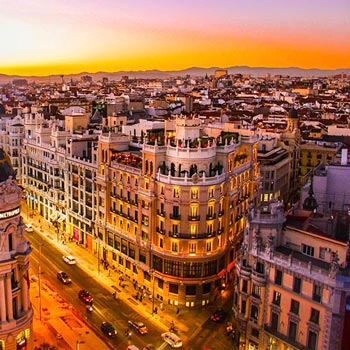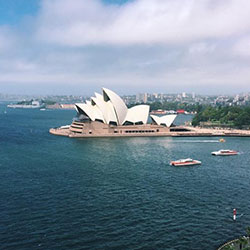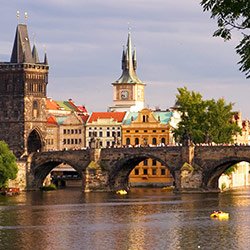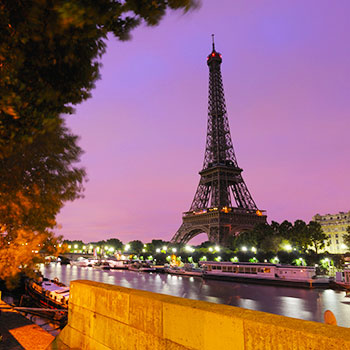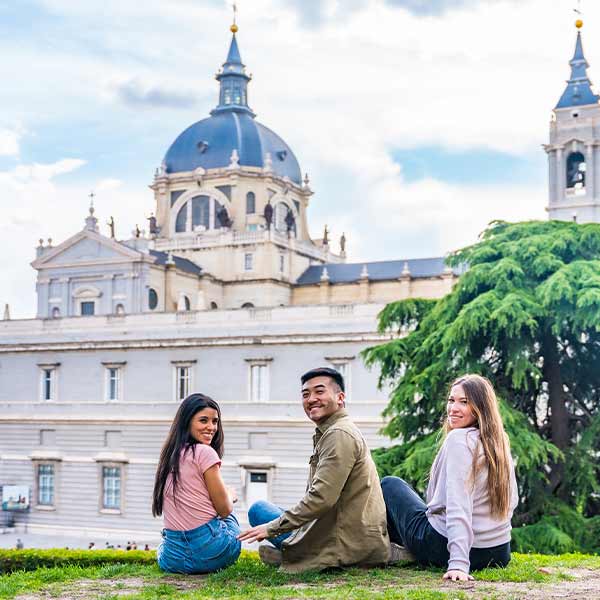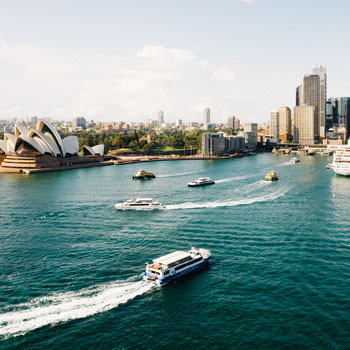My Class Trip to Vyšehrad Fortress in Prague
Academics at CEA CAPA
Having always valued my education, I was especially grateful for the selection of courses offered through CEA CAPA. As a political science major and a double minor in women, gender, and sexuality studies (WGSS) and music, there was an array of interesting classes for me to choose from.
Courses ranged from ones about democracy and diversity in the Czech Republic to ones focused on business and communications. These options made me equally excited to branch out and take something different and out of my comfort zone. I was also looking to take a class that was locally specific to Prague, my study abroad home base.
My “Geography in the City: Prague” course has easily become one of my favorites. The course examines the spatial planning and urban spaces of Prague through analyzing, interpreting, and critically reflecting on the city itself. I really love how CEA CAPA courses prioritize learning beyond the classroom. They make sure that it remains a vital part of the study abroad experience. My specific seminar structure is largely centered around active learning, experience-based involvement, and field studies, along with some lectures and discussions. I have never taken a course this dependent on field studies and just experiencing things rather than simply reading about them.
Visiting Vyšehrad Fortress
My CEA CAPA “Geography in the City: Prague” course was able to take a trip during our allotted class time to the Vyšehrad Fortress. The readings for that week went into the history of the castle and its role as a shadow castle in comparison to the famous Prague Castle in Hradčany, Prague 1. A short tram ride away from the CEA CAPA Study Center, the Vyšehrad grounds are located just south of New Town in Prague 2. It was eye-opening to me to be able to read about the evolution of this historical castle, while additionally being able to visit and experience the place in person.
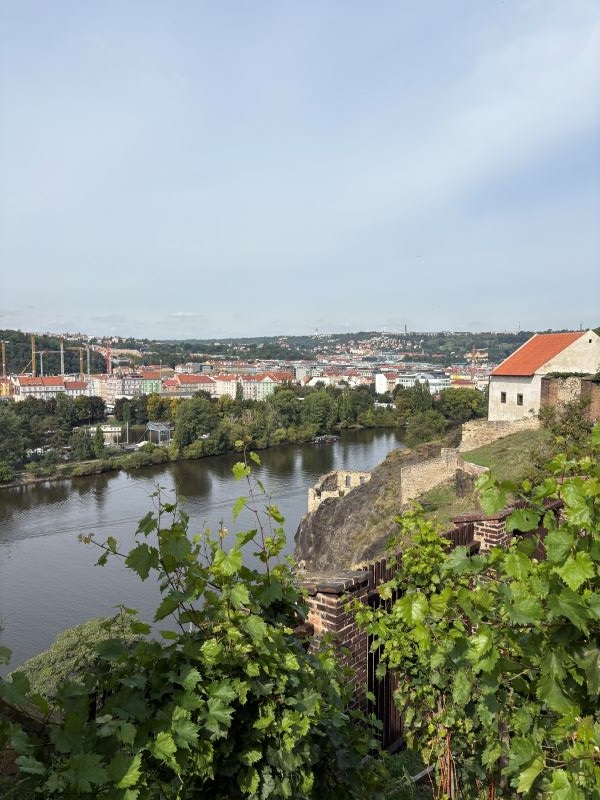
An overview of the Vltava River with remnants of the castle in the distance, showing its architectural evolution.
The Vyšehrad Fortress sits atop a hill and overlooks the Vltava River. My professor highlighted that the fort has undergone several periods of reconstruction and rebuilding, but what currently remains are these
Gothic-Baroque style structures. It’s interesting to learn about the history of Vyšehrad in comparison to that of the Prague Castle and get to see how its layout and architectural build have evolved over time.
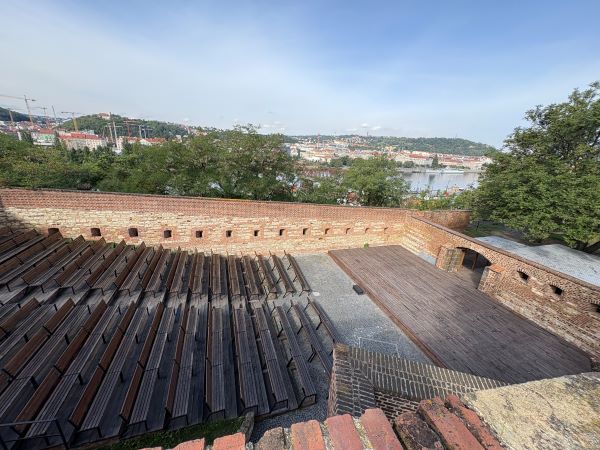
This area was used for theater performances during the medieval period at Vyšehrad Castle, and now it provides a glimpse into life during that time.
I can recognize that seeing the castle in person was essential to my understanding of the structures and the concepts that we were attempting to apply from the classroom. I got to admire the beautiful and detailed murals that lined the Collegiate Church of St. Peter and St. Paul, the main church within the fortress, along with the Rotunda of St. Martin, the Slavín cemetery, and the wide open grassy area with statues.
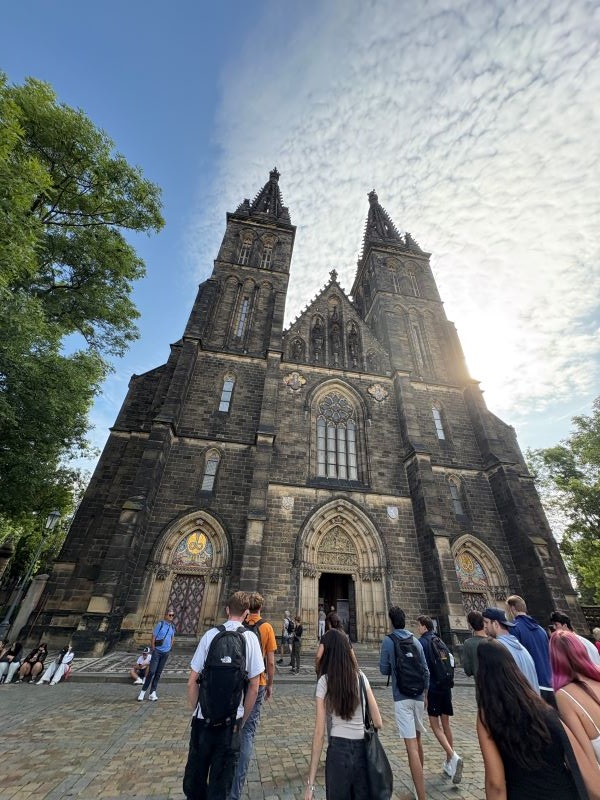
The main church within the Vyšehrad grounds, and my classmates walking up to examine the mural detailing.
Analyzing images of the castle when it was surrounded by a barrier wall versus the bits and pieces of wall that stand today further shows the change that the city has experienced. I believe that the only way to truly grasp these architectural changes and nuances is to examine the grounds in person and get a feel for the environment.
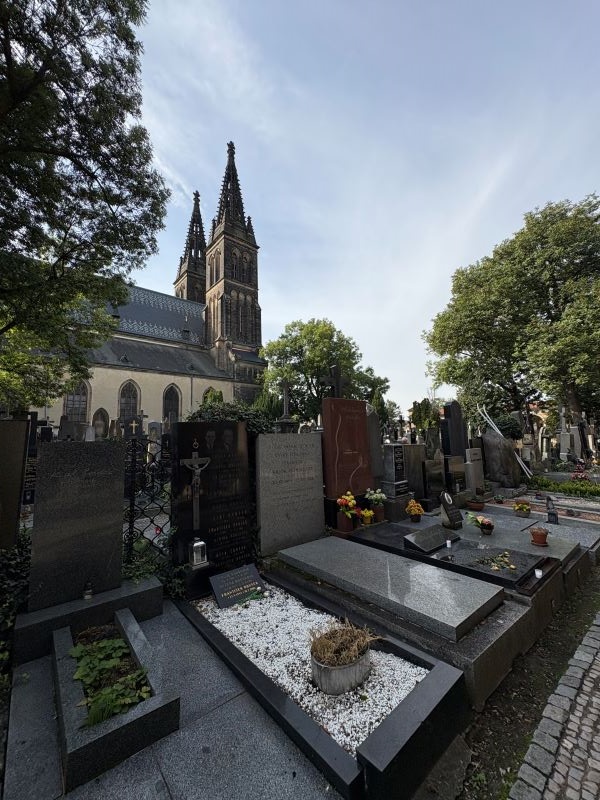
The Slavín cemetery, which includes buried artists (composers, writers, etc).
Experiential Learning
While field trips and field studies may seem quite course-specific to my “Geography of the City: Prague” class and its main learning objectives, CEA CAPA stresses the importance of experience-based learning throughout their programs. I am deeply grateful for the program's push to teach students in real time and have us learn beyond the book and beyond the classroom.
In regards to my geography course, my professor has stressed the importance and vitality of qualitative research in the class and in life. The technique prompts you to ask questions of what, who, how, where, when, and why about a new place or space. It forces you to observe and be immersed in what you are experiencing and feeling. I think that it also allows you to embrace the quiet and look for the detailed subtleties.
Learning in Prague
I continue to be amazed by the culture and history here in Prague, and Vyšehrad only furthers those feelings. By being present and immersive, you have the opportunity to look at history, culture, and a life that is unknown to you. Through this field study, I was able to examine the complexity versus the simplicity and see what emotions and feelings were evoked within a space. Vyšehrad made me feel calm as I looked over the city and skyline, but there also existed essential narrative elements that connected the various buildings and spaces. I look forward to the many more field trips and learning experiences I will have outside of the classroom in Prague.
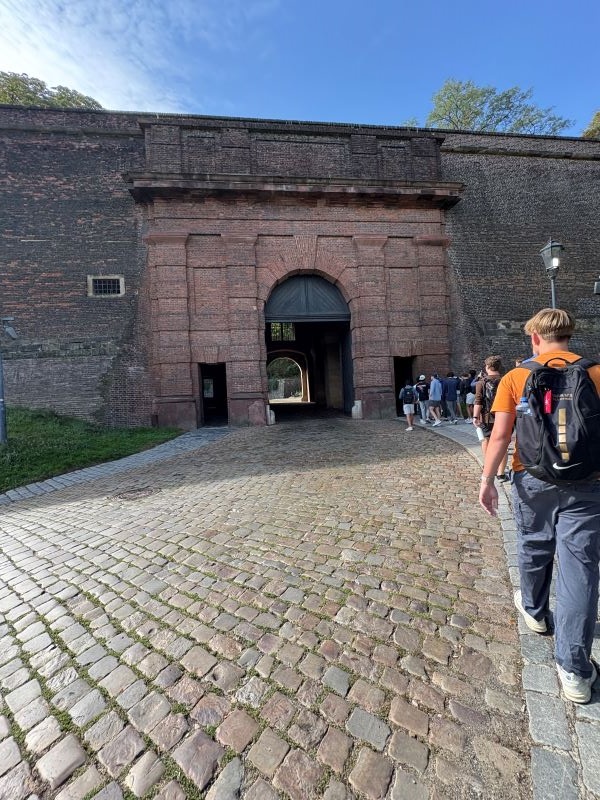
My classmates and I following our professor into and throughout the grounds of the Vyšehrad fortress.
